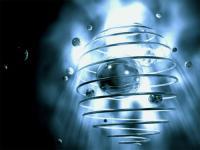
In theory, a computer working on highly complex principles of Quantum Mechanics would be capable of performing calculations faster than the most advanced supercomputer. A Quantum computer could factor a 300-digit number in seconds, compared to the years required by any conventional computer. Such Quantum computers could change the way we interact with our devices. Much more advanced, and super-intelligent robots and devices would become possible. It might even be possible to build humanoids, whose intelligence is at par with the human brain.
With the super fast processing speeds of Quantum computers, scientist would be able to study the biological phenomenon at a molecular level. Physicists could unravel the biggest mysteries of the universe. As quantum particles can exist in multiple states at the same time, computers based on it can theoretically process calculations much faster than traditional bits, which can only exhibit one state at a time. Now scientists at University of British Columbia (UBC) and University of California Santa Barbara have announced a major breakthrough in the science of Quantum computing.
According to the paper published in Nature, the researchers have managed to predict and suppress environmental decoherence, a phenomenon that has been described as a quantum bug that destroys fundamental properties that quantum computers would necessarily rely upon. Quantum Mechanics can be understood as the study of the behaviour of matter and energy at the molecular, atomic, nuclear, and even smaller microscopic levels. The sub-atomic particles do not seem to observe Newtons laws of motion and gravitation that governs macroscopic objects.
An electron, for instance, is a Quantum particle. It obeys the laws of quantum physics and can exist at two states at the same time. You can imagine an electron as a coin that is lying in your wallet and in someone elses wallet simultaneously. Scientists call this state of being at two places at once superposition. However, the complex matter made out of many atoms can only be at one place at any point of time. The complex objects cannot be present at different places, because, they tend to interact and entangle with other objects in the environment and then decay into a single state.
The science of Quantum computing makes use of quantum bits, or qubits, to encode information in the form of ones and zeros. The traditional computer that we use today, are based on traditional bits, which can only exist at one place at one time. Whereas a quantum computer takes advantage of the fact seemingly impossible fact that qubits can exist in multiple states at the same time, in accordance with the theory of "superposition."
The tendency of atomic-scale particles to get tangled with the larger objects in the physical world is called Decoherence. You can think of Decoherence as a noise or interference that knocks the quantum particle, in this case the electron, out of its superposition. So for Quantum computing to be realised it is necessary to find a way of suppressing Decoherence. This is the breakthrough that scientists at University of British Columbia and University of California Santa Barbara have been able to achieve. Using high magnetic fields, the scientists managed to suppress decoherence, one of the key stumbling blocks in quantum computing.
Phil Stamp, UBC professor of physics and astronomy and director of the Pacific Institute of Theoretical Physics, says, For the first time weve been able to predict and control all the environmental decoherence mechanisms in a very complex system, in this case a large magnetic molecule called the Iron-8 molecule. Our theory also predicted that we could suppress the decoherence, and push the decoherence rate in the experiment to levels far below the threshold necessary for quantum information processing, by applying high magnetic fields.
These new findings could, in a matter of a decade, pave way for us to build Quantum computers, which are light years ahead by the standards of todays computers.

 In
In
Add new comment